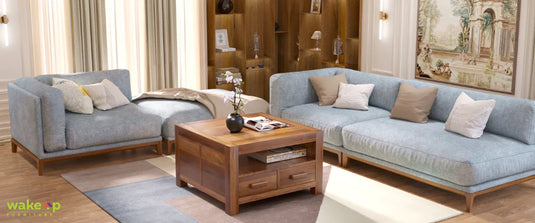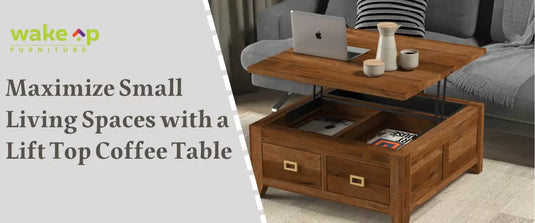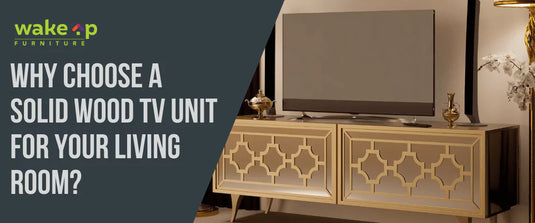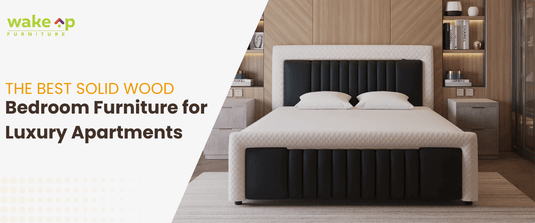Have you ever walked into your living room and felt something was just... off? Perhaps it was the awkward placement of your sofa or the lack of a clear conversation area. Arranging furniture can make or break the functionality and aesthetics of your living room. This blog post aims to provide practical tips on how to arrange furniture in a living room, catering to homeowners and interior design enthusiasts who want to make the most of their space.
Understanding Space
Before moving any furniture, it’s crucial to understand your living room's space. Begin by assessing the size and shape of the room. Is it a cozy square or a sprawling rectangle? The dimensions will significantly influence how you arrange your furniture.
Look for natural focal points like fireplaces, large windows, or built-in shelving units. These elements often dictate where your primary pieces, such as sofas and entertainment centers, should go. Lastly, consider the room's purpose. Is it a space for relaxing, entertaining, or both? The function will guide your layout choices.
Layout Basics
Conversation Area
A well-designed conversation area is key for creating a welcoming living room. Arrange your sofas and chairs to face each other, fostering easy interaction. Even in open concept living rooms, a rug can help define this space.
Focal Point Orientation
Align your furniture around the room's focal point. For example, if your living room features a beautiful fireplace, ensure your seating arrangement highlights it. This creates a balanced and visually appealing layout.
Traffic Flow
Ensure there's enough space for people to move around comfortably. Avoid placing furniture in direct pathways. Instead, create natural walkways by keeping at least 3 feet of space around major pieces.
Furniture Selection
Style and Functionality
Your furniture choices should reflect both your style and the room's functionality. Opt for a mix of comfortable seating and versatile pieces. A sectional sofa might be perfect for a family-friendly room, while a pair of sleek accent chairs could add elegance.
Choosing Pieces
When selecting pieces, think about how each item will fit into the overall layout. Multi-functional furniture, like ottomans with storage or sofa beds, can be particularly useful in maximizing space.
Cohesive Look
Aim for a cohesive look by sticking to a consistent color palette and style. Mix and match different textures and materials, but keep the overall design harmonious.
Tips for Small and Large Spaces
Small Spaces
In compact living rooms, every inch counts. Opt for furniture with a smaller footprint and lighter colors to create an airy feel. Use vertical space by adding shelves or tall storage units.
Large Spaces
Larger rooms offer more flexibility. Create multiple seating areas or introduce larger pieces like a grand sectional. Don’t be afraid to fill the space; balanced proportions are key.
Maximizing Space
Regardless of room size, use mirrors to create an illusion of more space. Also, consider the scale of your furniture. Oversized pieces can overwhelm a small room, while tiny furniture may look lost in a large area.
Utilizing Accessories
Rugs
Rugs can anchor your furniture arrangement and add warmth. Choose a rug that complements your color scheme and is large enough to fit all your main furniture pieces.
Lighting
Good lighting can transform any space. Combine ambient, task, and accent lighting to create a well-lit, inviting room. Floor lamps, table lamps, and sconces are excellent for layering light.
Other Accessories
Pillows, throws, and artwork add personality to your living room. Use these accessories to introduce pops of color and texture, making the space uniquely yours.
Case Studies
Before and After 1
Consider a rectangular living room with a misplaced sofa and no clear focal point. By repositioning the sofa to face the fireplace and adding an accent chair, the room becomes more functional and visually appealing.
Before and After 2
An open concept living room with scattered furniture lacks cohesion. By grouping furniture into defined areas using rugs and adding a central coffee table, the space instantly feels more organized and inviting.
Before and After 3
A small living room feels cramped with oversized furniture. Swapping out bulky pieces for sleeker, multi-functional ones creates a more spacious and comfortable environment.
Arranging furniture in your living room doesn’t have to be daunting. By understanding your space, choosing the right pieces, and paying attention to layout basics, you can create a room that is both functional and stylish. Ready to transform your living room? Start implementing these tips today and watch your space come to life. Elevate your space further with our exquisite living room furniture collection!




